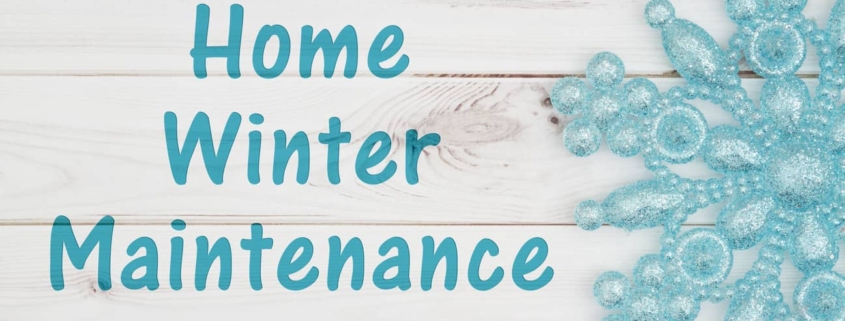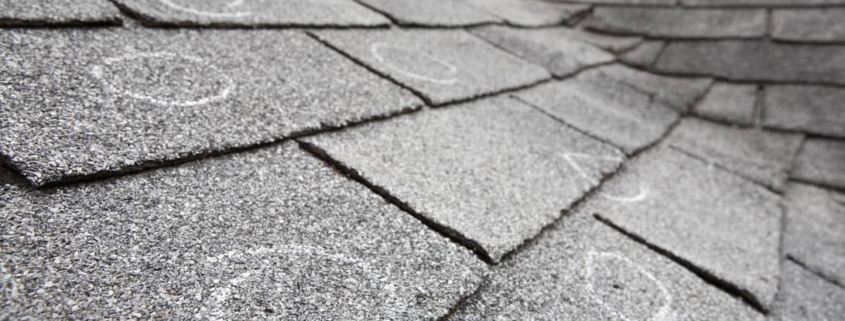It is that time of the year! The season of cold temperatures and snow. Knowing that life will slow down a little and there are things to do around the home, there are winter maintenance areas you can take care of. Now, don’t forgo the time with family or time in front of the fireplace, but on days you are looking for something to do, we will give you some tips. The five most important winter maintenance tips to take the time to take care of are: cleaning the clothes dryer, chimney cleaning, freezing pipes, HVAC and furnace, and storing and stacking firewood.
Clothes Dryer Cleaning
Most households use the clothes dryer several times a week. Sometimes the lint builds up and the dryer doesn’t work as well. Here is how to clean the clothes dryer.
- Dryer inspection – Take off the dryer cover outside your home and see if there is a clog.
- Remove the clog – If there is a clog, make sure you take out the dirt, leaves, debris, lint, and animal droppings.
- Go back to the dryer in your home – Remove lint and materials that are in the dryer vent hose.
- Dryer vent cleaning tool – Use this to get any of the lint that may be inside the vent pipes that you can’t reach without it
- Pull out the dryer – Check the area behind the dryer to make sure it is clean.
- Remove all lint – This is done by cleaning the dryer lint trap and drum to make sure the lint is removed. Also, the airflow will increase and this will keep the lint buildup at a minimum.
Why You Should Clean the Clothes Dryer Vent
According to the U.S. Fire Administration, dirty dryer vents are the leading cause of domestic dryer fires. Thus, it is important that they are cleaned out at least once a year.
- Save energy – Cleaning the dryer vent each year will help you improve energy efficiency. This can save up to 30% on this utility bill!
- Reduction in fire risk – Lint is highly flammable so keeping this out of the dryer will reduce the risk of fire.
- Maintenance is reduced – When the dryer vent is cleaned regularly, it has less chance of clogging and overheating. Thus, this means less time for repairs and other technical issues.
- Less strain on the dryer – There is less wear and tear on the dryer when it is cleaned on a regular basis and it is not overworking to dry the clothes.
Chimney Cleaning
Reach out to your local chimney sweep to have your chimney cleaned. Once your home inspection team determines that the chimney and chimney flue are intact, you can hire your local chimney sweep to clean the inner workings. If you feel like tackling this project on your own, you will need the following items.
- Ladder
- Gloves
- Long sleeve clothing
- Flashlight
- Drop cloth
- Chimney brush or broom
- Face mask
- Goggles
Maintenance
Fireplace maintenance is something that can be done by most homeowners. Let’s take a look at what you can do to prepare your fireplace for winter use.
- Gather as much firewood as you can store at least a year in advance.
- Remove all ashes from the fireplace.
- Open the damper and clean it so that it does not have any creosote or residue. Then leave it open as you begin to start your fire.
- Take the larger fire logs and build a base. Then place smaller logs on top as you create your fire. Be sure to include sticks and newspapers for kindling and fire-starting.
If you can get away with using your fireplace as much as you can in the winter, you will save on your utility bills.
Freezing Pipes
When you live in an area that experiences freezing temperatures, it is important to make sure you insulate the pipes. Here are some tips for winter to hopefully make sure this doesn’t happen:
- Faucets should be on a continuous drip when there are freezing temperatures.
- Shut off the water to the hose outside and drain the pipes.
- You should run your faucets on a drip so water continues to flow.
- It’s a good idea to shut off the water to your outside hose and drain the pipes.
- Maintain the temperature in your home above 55 degrees Fahrenheit, even when you go out of town.
- Open cabinets that have plumbing for warm airflow.
- Add insulation to the pipes.
- Ensure that proper insulation takes place in your attic, garage, and basement.
HVAC and Furnace
When preparing your HVAC and furnace for the winter months there are a few steps that you can take. Let’s review the most important areas to maintain as you approach the winter months.
- Maintain the area around your AC unit and Furnace – Keep all debris, grass, and shrubs away from your AC unit. Also, remove any clutter from around your furnace or interior AC unit.
- Replace the filters – Be sure to replace your air filters in the AC unit and the furnace filter if you have one. It is recommended that you replace these filters every couple of months, depending on the type of filter you have purchased. Also, depending on if you have pets, smokers, or other contributors to high dust and debris, you might be replacing your filters more often.
- Clean your exterior condensing unit – Taking a hose to the condensing unit to wash off dirt, pollen, and other buildups from nature allows the unit to continue working properly.
- Maintain the condensate line – Pour the recommended solution down your condensate line every three months or so. Also, you can mix 1/4 cup of vinegar with a cup of water and pour the mixture down your condensate line. Let it sit for 30 minutes with the system turned off. After 30 minutes you can turn the system back on.
- Check and set your thermostat – Double-check the thermostat to ensure that it is working properly. Then set the temperature to the proper heat levels to keep your home warm in the winter months.
Storing and Stacking Firewood
Making sure that you have enough firewood stored for the winter should be a priority. If you aren’t sure how to store it or stack it, then take a look below at some recommendations.
- Store all firewood elevated off the ground and away from the walls. Use a couple of 4×4 beams or purchase a pre-constructed firewood holder from your local hardware store.
- Expose the ends of the firewood that have been cut.
- Stack the wood as loose as possible so that it can breathe and stay dry.
- Keep the stack of firewood in direct sunlight.
Other Recommended Maintenance
Now that you know about winter maintenance tips, here are some other areas to look at. One of those is a roof inspection checklist. Roofs last about 15-20 years, but they do need maintenance. Take the time to check the flashing, shingles, vent pipes, and moss or lichen growing on the roof to name a few and this will help.
Another area is garage door safety. Repairs to the springs of garage doors should be done by a professional. This is because the springs can snap under the tension and break, causing injury or death. Also, making sure that the garage door opens easily is key. If it does not, contact a professional to fix it before it causes harm to someone.
Lastly, sometimes mold grows on the carpet. To take care of it, ventilate the room, cut out the piece if it is small, use baking soda, or vacuum the area to name a few. If it is a larger area, you may need to contact a professional.
When to Call a Professional
Conducting your annual winter maintenance is something that can be done by most homeowners. However, if you are a homeowner who cannot complete the checklist on your own, reach out to your local home inspection team. They can recommend all of the areas of your home that need some type of winterization maintenance. Also, they can recommend all of the reputable contractors that can assist you in getting your systems prepared for winterization.
Conclusion
Even if you are a homeowner who loves do-it-yourself projects, you should reach out to your local home inspection team. They can go over the entire winter maintenance checklist with you. This ensures that all systems are properly prepared for the winter. Reach out to Blue Guardian Home Inspections for a full home inspection in Kendall, Kane, Dupage, and LaSalle Counties of Illinois.



